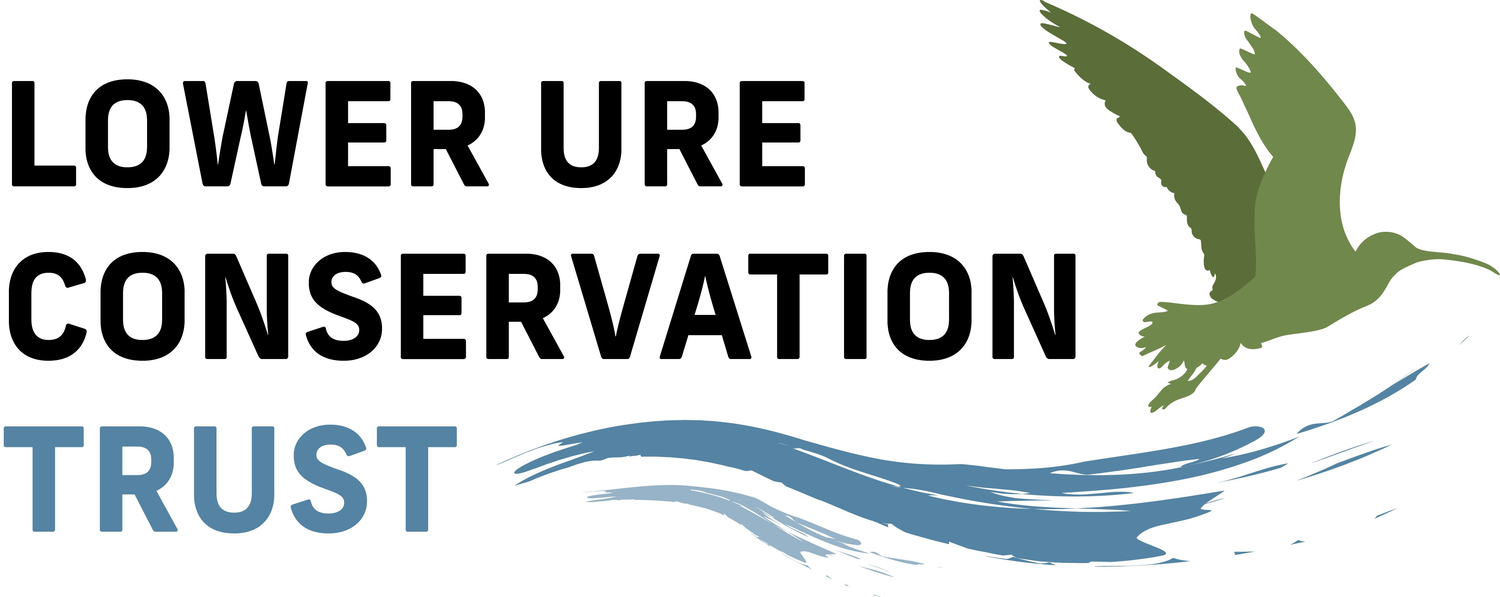Written by Keith Gittens
Over the past two years, as part of the ongoing wetland recreation project at the quarry site, there has been opportunity to do some focussed recording of dragonflies. Aided by volunteers Julie Greenshaw and Katherine Cavanagh-Jackson, regular recording has taken place at newly established habitat around Flask Lake along with ad-hoc recording at the reedbed and later in the season on the main reserve at the East Silt Lagoon.
Although the weather from July 2023 was relatively poor, the good weather of 2022 and spring 2023 gave plenty of opportunity for dragonfly dispersal and colonisation of Nosterfield’s newly created habitats. Climate change is influencing our dragonfly fauna with many southern species moving north and this is reflected in what we are seeing at Nosterfield. Exciting times but with a word of caution as some more northerly distributed species are showing signs of decline.
The report below is based on verified data from irecord which includes records from BTO Birdtrack and iNaturalist. Many thanks to all who contributed records.
Willow Emerald Damselfly Photo: Keith Gittens
Damselflies
Willow Emerald Damselfly (Chalcolestes viridis)
This species was first recorded in Yorkshire in 2019 and since then has spread rapidly with first records for Nosterfield in late summer 2022. The species is usually found were trees and bushes of willow and alder overhang the water, the females egg-laying in to suitable branches. The egg-laying scars are visible and are a good way of recording breeding evidence.
Only two records of adults from 5 and 9/9/23, scars were noted in winter 2022/23 and this autumn.
Red-eyed Damselfly Photo: Keith Gittens
Red-eyed Damselfly (Erythromma najas)
A new species with numerous records in May/June at the quarry reedbed where males were seen on floating leaves and algal mats. This species has shown some signs of expansion in Yorkshire in recent years and at Nosterfield is right at the northern edge of its range.
Small Red-eyed Damselfly (Erythromma viridulum)
Records from the quarry and reserve but main breeding area currently the East Silt Lagoon were the males perch on aquatic vegetation that breaks the surface.
First recorded at the reserve in 2019. This species has colonised Yorkshire over the last 15 years or so and is now recorded as far north as County Durham.
Large Red Damselfly (Pyrrhosoma nymphula)
These are the first adult records of the species across the reserve and quarry with a record from the reedbed in July and the East Silt Lagoon in early August.
Only 1 other record of an exuviae from 2015 at the reedbed. This widespread species looks to have been slow to colonise but may now be doing so.
Emerald Damselfly (Lestes sponsa)
Two records from the quarry site. The species has been recorded since 2018 having a preference for where there are reedy margins. Nationally a species showing signs of decline.
Banded Demoiselle (Calopteryx splendens)
Occasional records of wandering individuals from breeding sites on our lowland rivers.
Well established and regularly recorded damselflies – Blue-tailed (Ischnura elegans), Common Blue (Enallagma cyathigerum) and Azure (Coenagrion puella).
Dragonflies
Hairy Dragonflies Photo: Keith Gittens
Hairy Dragonfly (Brachytron pratense)
After a single record from the reserve in 2022 there have been 4 records between May and June 2023, one from the reserve and the rest from the quarry. A species with a limited distribution in Yorkshire it has been showing signs of expansion and is now known to breed at Staveley NR. The reedbed and fen at the quarry could provide suitable breeding habitat for the species.
Lesser Emperor Dragonfly Photo: Keith Gittens
Lesser Emperor (Anax parthenope)
Following an influx in to Yorkshire in 2022 including records from the quarry there have been 2 records from the quarry July/August 2023, otherwise only recorded in 2005. This European species is now recorded regularly in the UK and proof of breeding has been found at some sites further south. Whether it becomes a regular breeding species nationally is yet to be seen.
Common Hawker (Aeshna juncea)
Two records from the reserve in July/August 2023. Sightings of this species are sporadic; its preference is for the acidic pools of our heaths and moorland. Nationally showing signs of decline.
Southern Hawker (Aeshna cyanea)
Although recorded at the reserve most records are from the quarry site where it has a preference for smaller newly created ponds.
Brown Hawker (Aeshna grandis)
Although the species has been recorded across both sites, in 2023 all records were from the quarry. The reedbed and newly created fen providing the most suitable breeding habitat.
Migrant Hawker (Aeshna mixta)
As this species has a preference for reedbeds most records are from the quarry site, although there are records from the reserve. The most numerous hawker in late summer.
Broad-bodied Chaser (Libellula depressa)
3 records from the quarry in June, where it favours the recently created smaller ponds.
Black Darter (Sympetrum danae)
A wanderer was recorded on a number of occasions at the reserve dipping pond in September. Otherwise only one record from 2021. Another species with a preference for acidic bog pools. Nationally showing signs of decline.
Ruddy Darter (Sympetrum sanguineum)
Small numbers recorded from the quarry and one record from the East Silt Lagoon on the reserve. First recorded in 2015, this is another species which is benefitting from the well vegetated margins of the reedbed and fen.
There are four species which are regularly recorded and widespread across both sites Emperor (Anax imperator), Four-spotted Chaser (Libellula quadrimaculata), Black-tailed Skimmer (Orthetrum cancellatum) and Common Darter (Sympetrum striolatum).





